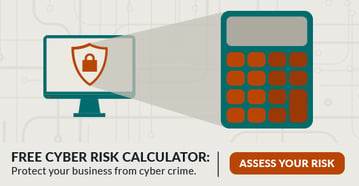 Cyber criminals, for the purposes of extortion, can threaten to shut down computer systems or erase data, infect a company with a virus, publish private information or personally identifiable information on customers or employees, institute a denial-of-service attack or take over social media. There are numerous examples of these attacks happening day in and day out, to businesses of all sizes.
Cyber criminals, for the purposes of extortion, can threaten to shut down computer systems or erase data, infect a company with a virus, publish private information or personally identifiable information on customers or employees, institute a denial-of-service attack or take over social media. There are numerous examples of these attacks happening day in and day out, to businesses of all sizes.
Travelers has provided the following checklist to help protect businesses from cyber crime:
1. Know your data. A company cannot fully know how much is at risk until they understand the nature and the amount of data they have.
2. Create file back-ups, data back-ups and back-ups bandwidth abilities. This will help a company to retain its information in the event that extortion occurs.
3. Train employees to recognize spear phishing. All employees should learn the importance of protecting the information they regularly handle to help reduce exposure to the business.
4. Do background checks on employees. Background checking employees can help identify whether they have criminal pasts.
5. Limit administrative capabilities for systems and social footprint. The less employees with access to sensitive information, the better.
6. Ensure systems have appropriate firewall and antivirus technology. After the appropriate software is in place, evaluate the security settings on software, browser and email programs. In doing so, select system options that will meet your business needs without increasing risk.
7. Have data breach prevention tools, including intrusion detection. Ensure employees are actually monitoring the detection tools. It is important to not only try to prevent a breach, but to make sure that if a breach occurs, the company is aware as soon as possible. Time is of the essence.
8. Update security software patches in a timely manner. Regularly maintaining security protections on your operating system is vital to them being effective over time.
9. Include DDoS security capabilities. It is important to have the ability to avoid or absorb attacks meant to overwhelm or degrade your systems.
10. Put a plan in place to manage a data breach. If a breach occurs, there should be a clear protocol outlining which employees are part of the incident response team and their roles and responsibilities.
11. Protect your business with insurance coverage designed to address cyber risks. Cyber insurance coverage typically provides protection for costs associated with data breaches and extortion events. The right insurance program will also provide access to skilled professionals to manage the event from start to finish.
Attend our upcoming Cyber Seminar to learn more about protecting your business.

